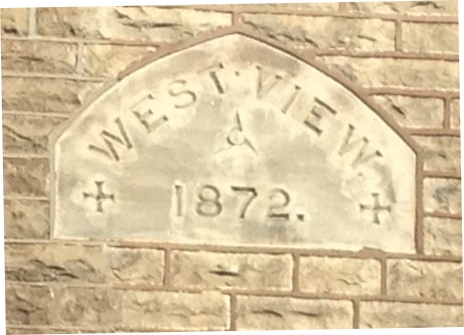December 2014
52 residents in 52 weeks
30/12/14 20:45
A number of family historians have taken part in Amy Johnson Crow’s 52 ancestors in 52 weeks blogging challenge. Some are even thinking of doing it again in 2105. See her blog for more details about her challenge.
I am pinching the challenge (with Amy’s permission - thanks, Amy!) and adapting it for a one-place study. So during 2015 I aim to blog about 52 residents of or people closely associated with Springhill. The idea is this will be weekly on Saturdays but we will see how that lasts.
Some of the individuals will have been mentioned before in this blog, especially in the April A-Z challenge below. Some will involve fairly detailed research, for others the blog may just be a census or trades directory entry or newspaper cutting. Some will have lived here, others owned land here or ministered at the local church, but all will have had an impact on life in Springhill.
To try and get away from the temptation to blog about the easy ones first I propose to cover the people in alphabetical order. Fittingly, that means starting with the now-familiar Ashworths. Had to be, I suppose.
I am pinching the challenge (with Amy’s permission - thanks, Amy!) and adapting it for a one-place study. So during 2015 I aim to blog about 52 residents of or people closely associated with Springhill. The idea is this will be weekly on Saturdays but we will see how that lasts.
Some of the individuals will have been mentioned before in this blog, especially in the April A-Z challenge below. Some will involve fairly detailed research, for others the blog may just be a census or trades directory entry or newspaper cutting. Some will have lived here, others owned land here or ministered at the local church, but all will have had an impact on life in Springhill.
To try and get away from the temptation to blog about the easy ones first I propose to cover the people in alphabetical order. Fittingly, that means starting with the now-familiar Ashworths. Had to be, I suppose.
local traditions - the Whinberry Naze dash
26/12/14 20:44
Every Boxing Day at 11.30 a group of fell runners gather at Marl Pits. Many are in fancy dress. They jog down Peel Street over the site of the old Cloughfold Station and reconvene at the bottom of Ash Mount where the fancy dress is judged.
They then proceed to run through the remains of Cloughfold Scrubbing Mill to the top of Cowpe Lowe where they are met by Santa handing out Smarties, after which they return to the start. The course is 4 miles with an elevation gain of 751 feet. It is a Fell Runners’ Association registered race, category BS due to the height gained/gradient (second category of three) and distance (short).
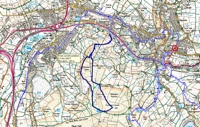
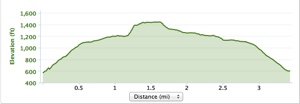
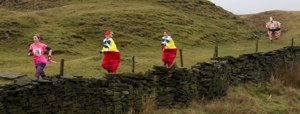
This year saw the usual smattering of Santas, a number of fairies (male), Andy Pandy, an Ironman who run the route in his underpants carrying a dumbbell, Tweedledum and Tweedledee, crime scene investigators…
The race was won by James Logue, the chap dressed as a black fairy.
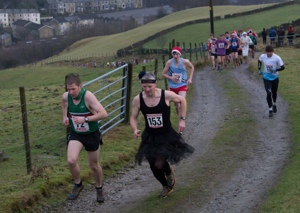
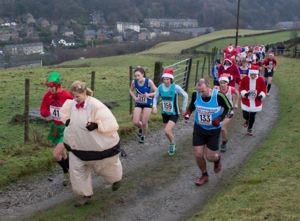
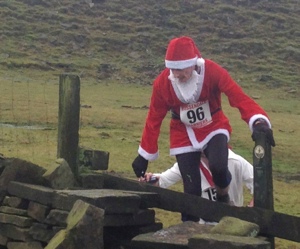
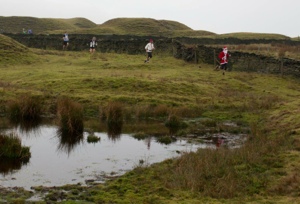
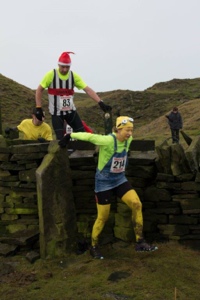
And thankfully nobody needed these excellent people:
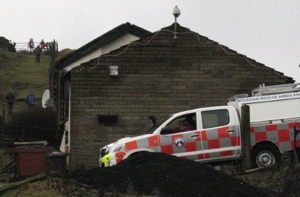
They then proceed to run through the remains of Cloughfold Scrubbing Mill to the top of Cowpe Lowe where they are met by Santa handing out Smarties, after which they return to the start. The course is 4 miles with an elevation gain of 751 feet. It is a Fell Runners’ Association registered race, category BS due to the height gained/gradient (second category of three) and distance (short).



This year saw the usual smattering of Santas, a number of fairies (male), Andy Pandy, an Ironman who run the route in his underpants carrying a dumbbell, Tweedledum and Tweedledee, crime scene investigators…
The race was won by James Logue, the chap dressed as a black fairy.





And thankfully nobody needed these excellent people:

local history and the hermeneutical circle
20/12/14 13:47
Wow! That sounds a bit heavy. Bear with me…
I love primary sources, whether this is grubbing around metaphorically amongst census returns and court rolls or literally in the fields above Springhill looking for the remains of the pipework bringing water from Saunder Height. That is why as much as this site as possible is transcripts from the original records so people can look for themselves and draw their own conclusions. We can’t include everything though and the very fact that some material is included and other not introduces a bias and degree of interpretation. This is the same whether the reason for inclusion is pragmatic (whether or not I can get hold of it at reasonable time and cost - hence not all the BMD certificates for every resident are online!) or judgemental (whether or not I think its worth including).
This effect is exaggerated when we come to secondary documents. I come to a piece of data with my own pre understandings of meaning and with a sense of where this fits into the whole. The data is understood in the light of both of these, and both my understanding and the whole are changed by the study of the new part. This then affects how I approach the data again (the circle) or any new data (spiral). For people keen on this sort of thing (and I love it) this is known as the hermeneutical circle, beloved of textual interpretation.
So with the best will in the world, secondary documents are full of biases - selection biases and interpretational biases. They are written in a time and a context, often for an agenda. Nothing wrong with that, but it affects what is written.
However over time these secondary sources themselves become primary sources about how the topic in question was viewed in that time and context. I have come across a couple of examples of this over the last couple of months which have triggered these thoughts.
The first of these is a history of the town of Rawtenstall written by Ian Fishwick in 1990. As a brief summary it is fair enough, comprehensive but poorly referenced. Its main interest now however is its frequent reference to the then current situation - to landmarks, football clubs, the picture house and ballroom all of which are no longer in use.
The second, perhaps more in keeping with hermeneutics, is a history of the first generation south Asian residents of Rossendale who came to the Valley after WWII. This was written as part of a project from a local puppetry/creative arts organisation to record the stories of these individuals whilst they are still alive and use these as the basis for a variety of creative arts projects. As a history it gives a brief summary (unreferenced) and some interesting insights. As a statement of how this was viewed by a Caucasian man as part of a multi-ethnic creative project in the context of international relations in 2014 it speaks volumes. It struck me that in years to come it could form part of a dataset on how ethnic history was viewed in this time and place for anyone researching early C21 views on the arrival of asian immigrants after WWII.
So today’s interpretation forms the basis for tomorrow’s raw data on how we thought in 2014.
I love primary sources, whether this is grubbing around metaphorically amongst census returns and court rolls or literally in the fields above Springhill looking for the remains of the pipework bringing water from Saunder Height. That is why as much as this site as possible is transcripts from the original records so people can look for themselves and draw their own conclusions. We can’t include everything though and the very fact that some material is included and other not introduces a bias and degree of interpretation. This is the same whether the reason for inclusion is pragmatic (whether or not I can get hold of it at reasonable time and cost - hence not all the BMD certificates for every resident are online!) or judgemental (whether or not I think its worth including).
This effect is exaggerated when we come to secondary documents. I come to a piece of data with my own pre understandings of meaning and with a sense of where this fits into the whole. The data is understood in the light of both of these, and both my understanding and the whole are changed by the study of the new part. This then affects how I approach the data again (the circle) or any new data (spiral). For people keen on this sort of thing (and I love it) this is known as the hermeneutical circle, beloved of textual interpretation.
So with the best will in the world, secondary documents are full of biases - selection biases and interpretational biases. They are written in a time and a context, often for an agenda. Nothing wrong with that, but it affects what is written.
However over time these secondary sources themselves become primary sources about how the topic in question was viewed in that time and context. I have come across a couple of examples of this over the last couple of months which have triggered these thoughts.
The first of these is a history of the town of Rawtenstall written by Ian Fishwick in 1990. As a brief summary it is fair enough, comprehensive but poorly referenced. Its main interest now however is its frequent reference to the then current situation - to landmarks, football clubs, the picture house and ballroom all of which are no longer in use.
The second, perhaps more in keeping with hermeneutics, is a history of the first generation south Asian residents of Rossendale who came to the Valley after WWII. This was written as part of a project from a local puppetry/creative arts organisation to record the stories of these individuals whilst they are still alive and use these as the basis for a variety of creative arts projects. As a history it gives a brief summary (unreferenced) and some interesting insights. As a statement of how this was viewed by a Caucasian man as part of a multi-ethnic creative project in the context of international relations in 2014 it speaks volumes. It struck me that in years to come it could form part of a dataset on how ethnic history was viewed in this time and place for anyone researching early C21 views on the arrival of asian immigrants after WWII.
So today’s interpretation forms the basis for tomorrow’s raw data on how we thought in 2014.
the felt industry in one family
08/12/14 22:59
I decided to sketch a basic family tree for every Springhill head of house on the 1911 census. With only 12 households this was a feasible proposition.
The occupier of Springhill House in 1911 was one Robert John Howorth Mitchell (RJH) , Director of felt works. Hmm, that’s interesting. RJH has the same surname as one of Rossendale’s major felt companies, he is listed as director of the felt works yet lives in a rented house, the owner at that time being RC Turner on behalf of Mrs Turner’s Trust. His wife was Helen Gladys Margaret Mitchell.
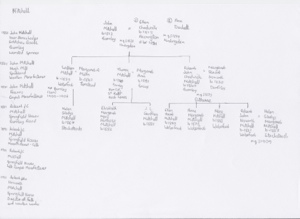
This begs three questions:
Was RJH related to the Mitchells who were instrumental in the felt trade?
Was he related to his bride, Helen Gladys Margaret Mitchell, prior to their marriage?
Why was he in a rented house?
A trawl through the censuses illustrates the history of the felt industry in Rossendale within the one family. To go back a couple of generations:
John Mitchell was born in Burnley in 1812, as was his wife Ellen. He had three sons, William (b1839, Burnley), Thomas (b 1840, Burnley) and Robert John Chadwick (‘RJC’,b 1847, Burnley).
By 1851 they were living at Hear Stones Lodge, Goldshaw Booth, Burnley where John is recorded as ‘Worsted Spinner”. 1861 he lived at Hugh Mill, Spotland (technically Rochdale but a mlle from Springhill), woollen manufacturer, and 1871 at Fearns, Waterfoot, Carpet Manufacturer. Thomas and William are at the same address in 1871 whilst RJC, ‘woollen manufacturer’ at the address of 1-5 Aldergate St, St Boltoph, City of London, which looks like a hotel.
It appears therefore that somewhere around the late 1850s John Mitchell moved from Burnley to the Waterfoot area of Rossendale (which includes both Fearns and Hugh Mill) and moved profession from worsted spinner to woollen/carpet manufacturer.
In the early history of the felt industry the majority of felt was manufactured in the Leeds area and transported to Rossendale for printing. With the lapse of a number of patents in 1854 the manufacturer of felt commenced in Rossendale and John Mitchell is said to have been one of the first felt manufacturers in the area. Much felt at that time was used for carpets as it was cheaper to produce and easier to handle than wool carpet. Something induced a worsted spinner to see and exploit this opportunity and John Mitchell built a substantial enterprise, often buying up mills and machinery cheaply from other failed manufacturers.
John Mitchell’s third son, RJC, is recorded as being at Springfield House, Rawtenstall, on the 1881, 1891 and 1901 censuses - confusing, given the similarities of names of Springhill and Springfield houses and the fact that the two properties are about 1/2 a mlle apart. In 1901 RJC is recorded as a ‘felt carpet manufacturer’, 1891 ‘manufacturer felt’, 1881 as ‘manufacturers dyers and printers’, 1871 ‘woollen manufacturer’. Mr and Mrs RJC Mitchell were prolific layers of datestones, including Woodlea Mission in 1894 by RJC and Waterfoot Conservative Club in 1889 by his wife.
William and Thomas are recorded at similarly large properties with similar occupations, in addition William was MP for Burnley (Cons) between 1900-1906 and hence on the 1901 census in Paddington with his wife and daughter Helen Gladys Margaret. Thomas was Hon Colonel in the 5th Battalion, East Lancs Regiment. He was obviously proud of this, recording it on every census even after his retirement. Thomas was in Devon in 1891 and London in 1901 and Brighton in 1911 so it appears that Rossendale did not attract him long term although some of this activity may have been sourcing and marketing.
By 1876 the three brothers had begun to trade under their joint names as Mitchell Brothers, becoming a limited company in 1893. Their innovations included techniques to increase the width of felted carpet and they are said to have developed needle-felting as a process permitting the felting of materials which are difficult to felt in the traditional manner. By 1897 it is said they owned every felt mill on the river Whitewell - 8 in total - plus others.
In 1904 Mitchell Brothers merged with two of their competitors, Richard Ashworth and William Stansfield to form Mitchell Ashworth Stansfield & Co Ltd or MASCO. They continued to trade under this name until they merged with the Bury Felt Manufacturing Co in 1962. Further mergers followed and the combined company finally ceased trading as a felt manufacturers in 1993.
Robert John Howorth Mitchell, the Springhill resident, was born in 1881, the third of four children (and only son) of Robert John Chadwick Mitchell (RJC) and Margaret Stuart Howorth. It was the new company, MASCO, that he directed. He married his cousin, Helen Gladys Margaret Mitchell, the daughter of William, in 1909.
An indication of the size of MASCO is given by the company’s roll of honour of WW1 below:
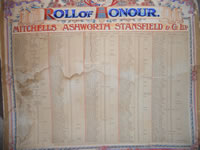
Looking a bit further on the 1911 census, RJH had been married for less than a year and had no children. It is feasible therefore that he rented a substantial residence whilst his own house was being made ready. He is listed as resident of Springhill House in Kelly’s directory of 1913 but that may be old data. It is unclear how long he stayed in there.
(Supplementary information from Walter, PThe Felt Industry’, Shire 2010)
The occupier of Springhill House in 1911 was one Robert John Howorth Mitchell (RJH) , Director of felt works. Hmm, that’s interesting. RJH has the same surname as one of Rossendale’s major felt companies, he is listed as director of the felt works yet lives in a rented house, the owner at that time being RC Turner on behalf of Mrs Turner’s Trust. His wife was Helen Gladys Margaret Mitchell.

This begs three questions:
Was RJH related to the Mitchells who were instrumental in the felt trade?
Was he related to his bride, Helen Gladys Margaret Mitchell, prior to their marriage?
Why was he in a rented house?
A trawl through the censuses illustrates the history of the felt industry in Rossendale within the one family. To go back a couple of generations:
John Mitchell was born in Burnley in 1812, as was his wife Ellen. He had three sons, William (b1839, Burnley), Thomas (b 1840, Burnley) and Robert John Chadwick (‘RJC’,b 1847, Burnley).
By 1851 they were living at Hear Stones Lodge, Goldshaw Booth, Burnley where John is recorded as ‘Worsted Spinner”. 1861 he lived at Hugh Mill, Spotland (technically Rochdale but a mlle from Springhill), woollen manufacturer, and 1871 at Fearns, Waterfoot, Carpet Manufacturer. Thomas and William are at the same address in 1871 whilst RJC, ‘woollen manufacturer’ at the address of 1-5 Aldergate St, St Boltoph, City of London, which looks like a hotel.
It appears therefore that somewhere around the late 1850s John Mitchell moved from Burnley to the Waterfoot area of Rossendale (which includes both Fearns and Hugh Mill) and moved profession from worsted spinner to woollen/carpet manufacturer.
In the early history of the felt industry the majority of felt was manufactured in the Leeds area and transported to Rossendale for printing. With the lapse of a number of patents in 1854 the manufacturer of felt commenced in Rossendale and John Mitchell is said to have been one of the first felt manufacturers in the area. Much felt at that time was used for carpets as it was cheaper to produce and easier to handle than wool carpet. Something induced a worsted spinner to see and exploit this opportunity and John Mitchell built a substantial enterprise, often buying up mills and machinery cheaply from other failed manufacturers.
John Mitchell’s third son, RJC, is recorded as being at Springfield House, Rawtenstall, on the 1881, 1891 and 1901 censuses - confusing, given the similarities of names of Springhill and Springfield houses and the fact that the two properties are about 1/2 a mlle apart. In 1901 RJC is recorded as a ‘felt carpet manufacturer’, 1891 ‘manufacturer felt’, 1881 as ‘manufacturers dyers and printers’, 1871 ‘woollen manufacturer’. Mr and Mrs RJC Mitchell were prolific layers of datestones, including Woodlea Mission in 1894 by RJC and Waterfoot Conservative Club in 1889 by his wife.
William and Thomas are recorded at similarly large properties with similar occupations, in addition William was MP for Burnley (Cons) between 1900-1906 and hence on the 1901 census in Paddington with his wife and daughter Helen Gladys Margaret. Thomas was Hon Colonel in the 5th Battalion, East Lancs Regiment. He was obviously proud of this, recording it on every census even after his retirement. Thomas was in Devon in 1891 and London in 1901 and Brighton in 1911 so it appears that Rossendale did not attract him long term although some of this activity may have been sourcing and marketing.
By 1876 the three brothers had begun to trade under their joint names as Mitchell Brothers, becoming a limited company in 1893. Their innovations included techniques to increase the width of felted carpet and they are said to have developed needle-felting as a process permitting the felting of materials which are difficult to felt in the traditional manner. By 1897 it is said they owned every felt mill on the river Whitewell - 8 in total - plus others.
In 1904 Mitchell Brothers merged with two of their competitors, Richard Ashworth and William Stansfield to form Mitchell Ashworth Stansfield & Co Ltd or MASCO. They continued to trade under this name until they merged with the Bury Felt Manufacturing Co in 1962. Further mergers followed and the combined company finally ceased trading as a felt manufacturers in 1993.
Robert John Howorth Mitchell, the Springhill resident, was born in 1881, the third of four children (and only son) of Robert John Chadwick Mitchell (RJC) and Margaret Stuart Howorth. It was the new company, MASCO, that he directed. He married his cousin, Helen Gladys Margaret Mitchell, the daughter of William, in 1909.
An indication of the size of MASCO is given by the company’s roll of honour of WW1 below:

Looking a bit further on the 1911 census, RJH had been married for less than a year and had no children. It is feasible therefore that he rented a substantial residence whilst his own house was being made ready. He is listed as resident of Springhill House in Kelly’s directory of 1913 but that may be old data. It is unclear how long he stayed in there.
(Supplementary information from Walter, PThe Felt Industry’, Shire 2010)
winter fruit
03/12/14 19:03
Most of the trees in Springhill are not fruit bearing, although a post about three wood pigeons attacking the rowan berries next door has appeared on the wildlife blog. It was a bit surprising therefore to see some new winter fruit on some of the trees - I wonder if any other places have similar eruptions.
Just noticed the ‘green man’ in the tree.
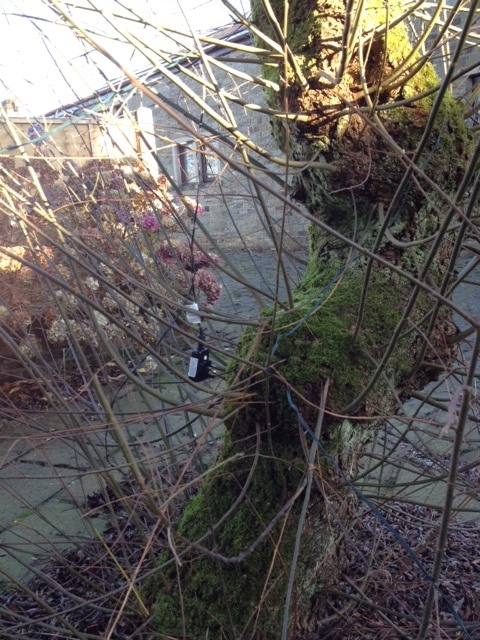
Just noticed the ‘green man’ in the tree.





